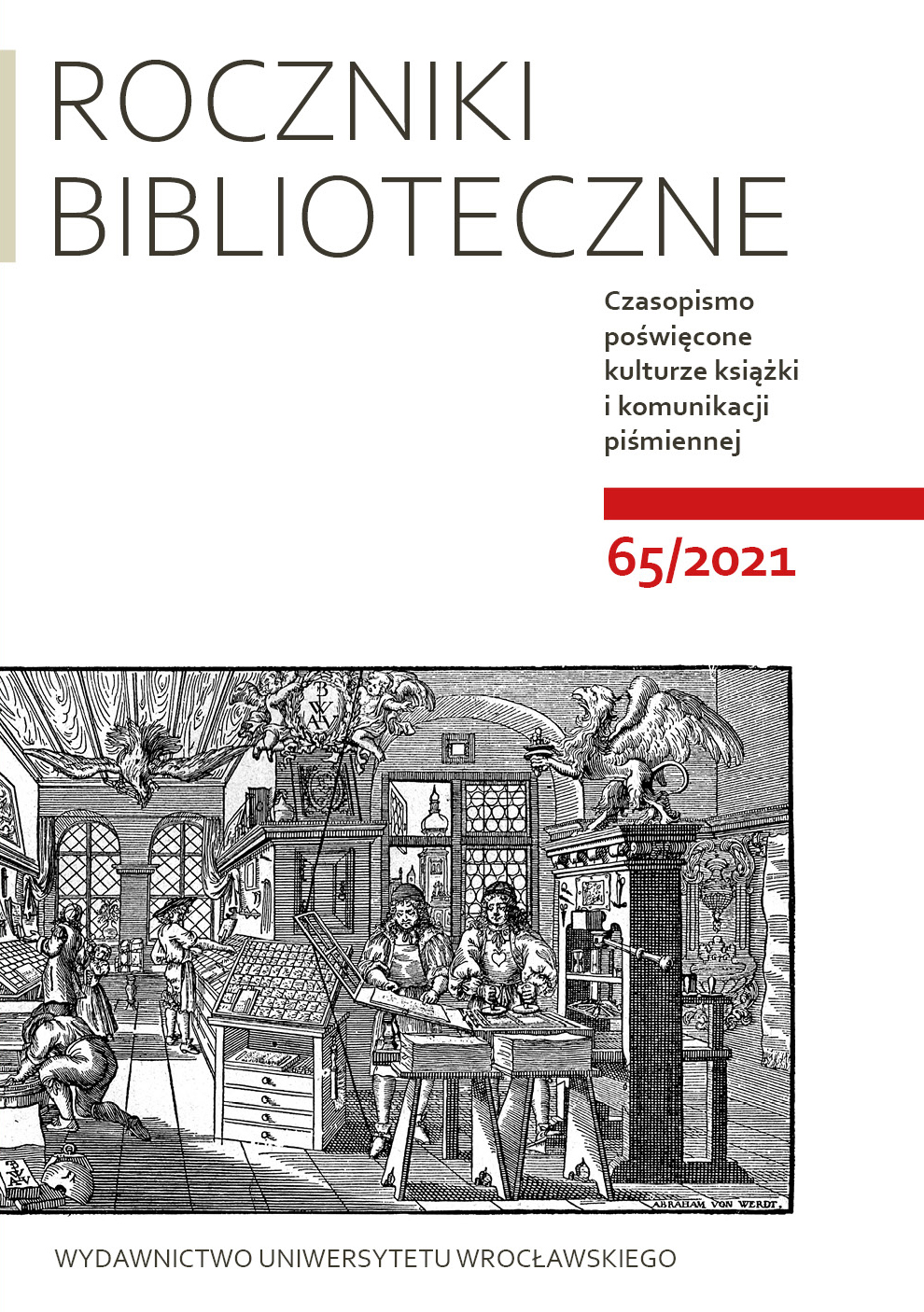Małgorzata Minkowska, Katalog druków śląskich XV–XVIII wieku ze zbiorów Zakładu Narodowego im. Ossolińskich, Wrocław: Wydawnictwo Ossolineum 2020, 287 ss., tabl.
Michał Spandowski, Catalogue of Incunabula in the National Library ofPoland, in collaboration with Sławomir Szyller, descriptions of book bindings prepared by Maria Brynda, Warsaw: National Library of Poland, 2020, 2 vols., 695+382 pp.
Author(s): Michał SpandowskiSubject(s): Review, General Reference Works
Published by: Wydawnictwo Uniwersytetu Wrocławskiego
Summary/Abstract: The determination of the National Library of Poland to have a collection representative of the early stages of printing has overcome avery complex history which has seen the creation, dispersal, and destruction of a number off oundational collections. The collection that the Załuski brothers intended to offer for public use in 1747 was removed to St. Petersburg by Catherine II in 1794. Many volumes were lost during transportation, more were destroyed or dispersed once there, resulting in only half the number ofbooks from the Załuski library being present in the Imperial Public Library. Following the1921 treaty of Riga, the Polish Republic tried to obtain the restitution of the library, which counted at least 3016 incunabula, this being a Russian calculation. Some 1987 incunabula returned to Poland in 1934, among them 1294 from the institution in St Petersburg that is now known as theRussian Public Library; they joined the National Library of Poland, which was created in 1928. A pre-war inventory of incunabula does exist and has allowed for the reconstruction of the eventful history of the Polish collection. The new library also received a number of other Polish collections, sometimes on deposit, such as the Wilanów, the Poniński, and the Rappers will libraries. More books were purchased and donated. During the war, a central catalogue of incunabula in Polish libraries commenced. German bombardments had already destroyed part of the early collections (for example, the Rap-perswill library) in 1939. As the war progressed, the incunabula collection, together with other valuable early material, was moved to the cellars of the Krasiński Library in Okólnik Street, built with reinforced concrete. In 1944, following the Warsaw Uprising, the cellars were inspected by an SS officer; the German manuscripts were removed and the rest burned. Seven incunabula survived to 1945, when the National Library was reopened; today, it hosts 1034 editions in 1131 copies.
Journal: Roczniki Biblioteczne. Czasopismo poświęcone kulturze książki i komunikacji piśmiennej
- Issue Year: 65/2021
- Issue No: 1
- Page Range: 334-343
- Page Count: 10
- Language: Polish

